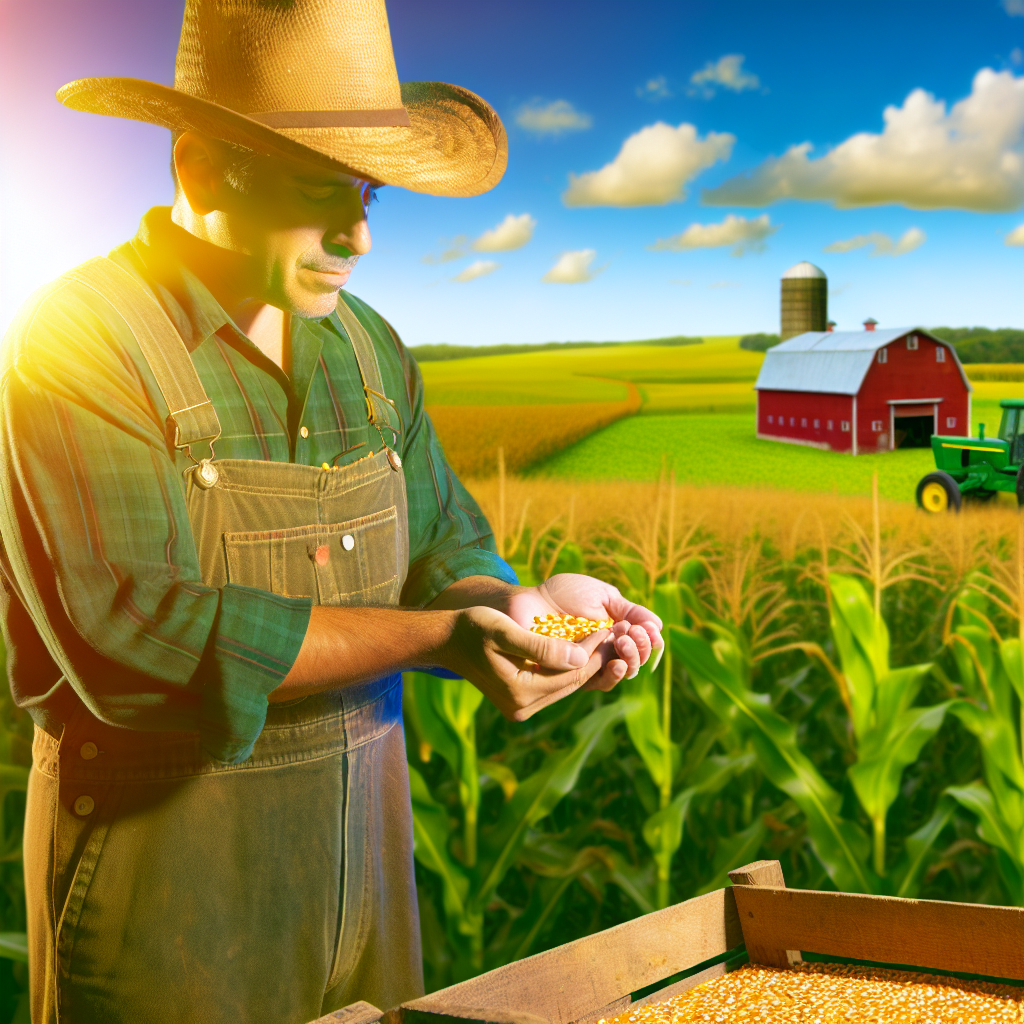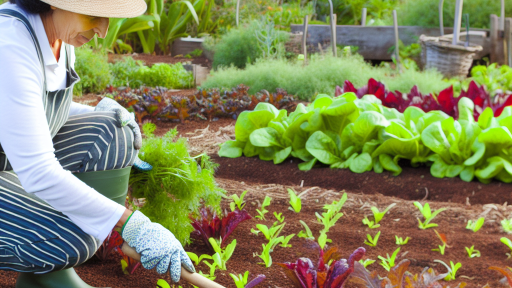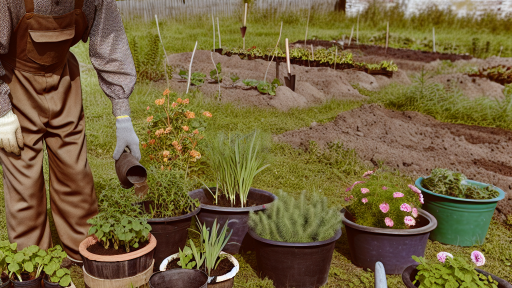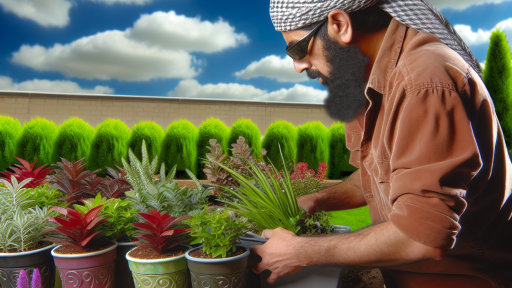Introduction to Seed Saving
Importance of Seed Saving
Seed saving plays a vital role in agriculture.
It allows farmers to preserve crop varieties.
This practice enhances biodiversity on farms.
Additionally, it helps in adapting to local conditions.
Benefits for Farmers
Farmers experience many advantages from saving seeds.
First, it reduces seed costs significantly.
Second, it empowers farmers to select the best seeds.
This selection process enhances crop resilience.
Moreover, farmers can maintain genetic diversity.
Contributing to Sustainable Agriculture
Seed saving fosters sustainability in farming practices.
It reduces dependence on commercial seed suppliers.
As a result, farmers can achieve greater self-sufficiency.
Furthermore, it encourages the cultivation of heirloom varieties.
This approach preserves valuable traits for future generations.
Strengthening Local Food Systems
Saving seeds also supports local food systems.
Transform Your Agribusiness
Unlock your farm's potential with expert advice tailored to your needs. Get actionable steps that drive real results.
Get StartedIt encourages farmers to grow food suited to their regions.
Consequently, this practice boosts local economies.
Additionally, it builds community resilience against food shortages.
Ultimately, seed saving promotes healthier, diverse diets.
Understanding the Basics of Seed Biology
Pollination Processes
Pollination is crucial for seed production in flowering plants.
This process involves transferring pollen from male structures to female structures.
Insects, birds, wind, and water often facilitate this transfer.
Successful pollination leads to fertilization and the formation of seeds.
Different plants have unique pollination mechanisms.
Understanding these mechanisms can enhance seed saving strategies.
Genetic Variation in Seeds
Seeds carry genetic information from their parent plants.
Genetic variation arises from sexual reproduction between different individuals.
Hybrid seeds result from cross-pollination between two distinct varieties.
Diversity in genetics allows plants to adapt to changing environments.
This diversity is essential for long-term agricultural resilience.
Seed Development Stages
After pollination, ovules develop into seeds inside fruits.
This process includes several stages: fertilization, seed maturation, and dispersal.
During maturation, seeds accumulate nutrients and traits from parent plants.
These traits influence growth patterns, resistance to disease, and yield.
Proper timing in seed collection is vital for preserving quality.
Factors Influencing Seed Viability
Environmental conditions affect seed viability significantly.
Temperature, moisture, and light levels play crucial roles.
Seeds require specific conditions to germinate successfully.
It’s essential to store seeds in a controlled environment.
Showcase Your Farming Business
Publish your professional farming services profile on our blog for a one-time fee of $200 and reach a dedicated audience of farmers and agribusiness owners.
Publish Your ProfileMonitoring humidity levels can prevent mold and decay.
Saving Seeds for Future Use
Seed saving is a sustainable agricultural practice.
Farmers can preserve their favorite varieties for subsequent seasons.
It allows for local adaptation of crops over time.
Farmers should document the origin and history of saved seeds.
This practice promotes biodiversity and self-sufficiency.
Seasonal Calendar for Seed Saving
Spring Planting and Preparation
Spring is the ideal time to prepare for seed saving activities.
Farmers should focus on planting heirloom varieties.
These varieties often produce seeds that maintain genetic traits.
Moreover, ensure proper spacing between different plant types.
This reduces cross-pollination risks.
Summer Care and Pollination
As summer progresses, monitoring plants becomes crucial.
Regularly check for flowering, as pollination is vital for seed production.
Consider hand-pollinating plants if necessary.
This ensures seed quality and desired traits in the offspring.
Harvest Timing in Late Summer
Late summer marks the time for harvesting seeds.
Harvest when seeds are fully mature and dry on the plant.
Avoid harvesting during wet weather, as this can affect seed quality.
Label harvested seeds immediately for easy identification later.
Fall Cleanup and Storage
Once harvesting is complete, focus on garden cleanup.
Remove any leftover plant debris to prevent pest issues.
Store seeds in a cool, dry location.
This enhances their viability for next season.
Winter Reflection and Planning
Winter is an excellent time for planning for the upcoming growing season.
Reflect on this year’s seed saving successes and challenges.
Evaluate what worked well and what needs improvement.
Additionally, research new varieties to add to your collection.
Find Out More: Scaling Your Mushroom Farm: Tips and Tricks
Choosing Which Plants to Save Seeds From: Tips and Best Practices
Identifying Healthy Plants
Start by selecting robust and healthy plants for seed saving.
These plants should show no signs of disease or pest damage.
Consider plants that thrived under your specific growing conditions.
This may include drought resistance or adaptability to local climates.
Understanding Plant Varieties
Choose open-pollinated varieties for seed saving.
Hybrid seeds do not reliably reproduce the parent plant traits.
Open-pollinated plants maintain genetic diversity.
This practice enhances resilience in future plant generations.
Evaluating Seed Quality
Inspect the seeds for size, shape, and color.
Good quality seeds should be plump and well-formed.
Discard any seeds that appear shriveled or discolored.
This ensures a healthier crop for the following growing season.
Showcase Your Farming Business
Publish your professional farming services profile on our blog for a one-time fee of $200 and reach a dedicated audience of farmers and agribusiness owners.
Publish Your ProfileTiming Your Seed Saving
Harvest seeds at the right time for optimal quality.
Seeds should be taken when they are fully mature.
Watch for visual cues, such as browning or drying out.
Early harvesting can result in poor germination rates.
Testing for Viability
Conduct a germination test before storing seeds.
Use a damp paper towel to assess seed viability.
Count the seeds that sprout within a predetermined time frame.
This step confirms the seeds’ ability to grow successfully.
Documenting Your Seed Varieties
Keep records of the varieties you save each season.
Note their characteristics, such as flavor and yield.
This information will help you refine your seed selection over time.
Documentation allows you to track performance year over year.
Considerations for Location
Choose seed sources carefully based on your location.
Local adaptations improve the chances of thriving crops.
Consider collaborating with nearby growers for better diversity.
This practice fosters a community of sustainable agriculture.
Storing Seeds Properly
Store seeds in a cool, dark, and dry place.
Label each seed package with the variety and date saved.
This practice ensures you can find the right seeds easily.
Proper storage extends seed longevity and vitality.
You Might Also Like: Starting Your Own Organic Small-Scale Farm
Techniques for Harvesting and Storing Seeds
Understanding Seed Harvesting
Harvesting seeds effectively requires careful timing and technique.
Farmers should monitor their plants for optimal harvest time.
Look for signs of maturity, such as dry pods or changed colors.
Use sharp tools to avoid damaging the plants while harvesting.
For example, scissors can be beneficial for delicate plants.
Methods for Collecting Seeds
Collecting seeds involves specific strategies to ensure quality.
Firstly, gather seeds on a dry day to prevent mold development.
Then, separate seeds from the plant material gently.
To do this, shake or rub the pods carefully.
Utilize a fine mesh to filter out smaller debris during collection.
Storing Seeds Properly
Proper storage enhances seed viability for future planting.
Choose airtight containers, such as glass jars or vacuum-sealed bags.
Label each container clearly to avoid confusion later.
Store seeds in a cool, dry place to maintain freshness.
Additionally, regular checks can prevent moisture build-up.
Tools for Seed Harvesting and Storing
Using the right tools simplifies the harvesting and storing process.
- Scissors or pruning shears for harvesting
- Mesh bags for drying and storing
- Labels for categorizing seed varieties
- Airtight containers to protect seeds
Investing in quality tools will greatly improve your efficiency.
Best Practices for Seed Saving
Implementing best practices ensures a successful seed-saving process.
Save seeds from the healthiest and most productive plants.
Showcase Your Farming Business
Publish your professional farming services profile on our blog for a one-time fee of $200 and reach a dedicated audience of farmers and agribusiness owners.
Publish Your ProfileAlways keep notes on each seed variety’s performance.
This information aids in making informed decisions next season.
Moreover, practicing crop rotation can help maintain plant health.
Delve into the Subject: Edible Landscaping Layouts for Small Farms

Common Mistakes in Seed Saving
Neglecting Seed Selection
Choosing the right seeds is crucial for successful seed saving.
Farmers often overlook traits important for their specific environment.
For instance, local climate adaptability can significantly affect germination.
Make sure to select seeds that perform well in your area.
Improper Storage Conditions
Many farmers fail to store seeds under optimal conditions.
Seeds require cool, dark, and dry storage to maintain viability.
Humidity can lead to mold and spoilage, drastically reducing seed quality.
Invest in proper containers to enhance preservation.
Ignoring Cross-Pollination
Cross-pollination can jeopardize the purity of saved seeds.
Failing to isolate different plant varieties leads to unexpected hybrids.
Consider using physical barriers like netting or planting distance.
Awareness of pollination patterns helps prevent unwanted cross-breeding.
Overlooking Seed Testing
Many farmers neglect to test the germination rate of saved seeds.
Without testing, you risk planting seeds that won’t sprout.
Regular testing allows you to track seed viability over time.
Conduct simple germination tests to ensure high quality.
Skipping Documentation
Failing to document seed sources and traits can lead to confusion.
Keep detailed records of seed varieties and plant performance.
Documentation aids in identifying successful plants for future seasons.
Consistency in record-keeping supports smarter farming decisions.
Underestimating Pest Control
Ignoring pest and disease management is a common pitfall.
Pests can destroy crops and contaminate saved seeds.
Implementing integrated pest management strategies can mitigate risks.
Proactive measures improve both seed quality and crop health.
Gain More Insights: Organic Techniques for Hydroponic Gardens
Legal Considerations
Understanding Seed Saving Laws
Seed saving laws vary by country and region.
Farmers should familiarize themselves with local regulations.
Understanding these laws helps prevent legal issues.
Types of Seed Saving Regulations
There are several types of regulations regarding seed saving.
- Patents protect innovative plant varieties.
- Trademarks safeguard brand names associated with seeds.
- Copyrights may apply to seed-related publications.
Each regulation influences how seeds can be saved and used.
Intellectual Property Rights
Intellectual property rights impact seed saving significantly.
Many farmers face restrictions on saving patented seeds.
Understanding these rights can prevent future conflicts.
Farmer’s Rights
Farmers possess certain rights under various regulations.
They often have the right to save seeds from their harvests.
However, this right may be limited by local laws.
Showcase Your Farming Business
Publish your professional farming services profile on our blog for a one-time fee of $200 and reach a dedicated audience of farmers and agribusiness owners.
Publish Your ProfileFarmers should verify their rights before saving seeds.
Best Practices for Compliance
Adopting best practices ensures compliance with seed regulations.
- Document seed sources to provide legal clarity.
- Participate in local agricultural organizations for guidance.
- Stay informed about changes in seed laws.
These practices can help protect farmers from legal challenges.
Seeking Legal Advice
In complex situations, seeking legal advice is advisable.
Consulting a legal expert can clarify seed saving laws.
Legal counsel adapts advice to specific local regulations.
Farmers can avoid potential pitfalls through informed decision-making.
Resources and Tools for Seed Savers
Books for Seed Saving
Many excellent books guide seed savers in their practices.
One notable book is “Seed to Seed,” authored by Suzanne Ashworth.
This book provides comprehensive techniques for saving seeds.
Another recommended title is “The Seed Garden” by the Organic Seed Alliance.
This resource shares insights on seed saving and sharing.
“The Complete Guide to Saving Seeds” by Joan H. H. Fait provides detailed instructions for various plants.
Websites for Seed Savers
Numerous websites offer valuable information for seed saving enthusiasts.
The Seed Savers Exchange website is a popular resource.
It features a wealth of articles, guides, and a community forum.
GardenWeb also provides a specific section dedicated to seed saving.
The website connects users with fellow gardeners and seed savers.
Moreover, the Xerces Society promotes the conservation of pollinators and native plants.
Organizations Supporting Seed Savers
Several organizations advocate for seed saving practices.
The American Seed Alliance works to protect and promote seed diversity.
They provide resources and support for seed savers across the country.
Additionally, the Seed Bank Project focuses on preserving heirloom seeds.
This organization raises awareness about the importance of biodiversity.
Lastly, local community gardens often serve as valuable hubs for seed saving education.
Tools for Effective Seed Saving
Having the right tools can enhance your seed saving experience.
The basic tools include clean storage containers and labels.
Use glass jars or paper envelopes for seed storage.
Also, invest in quality scissors for efficient seed collection.
Lastly, a notebook can help keep track of varieties and germination rates.
Additional Resources
The Three Sisters of Indigenous American Agriculture | National …
Vegetable Seed Saving for Home Gardeners and Small-scale Farmers




